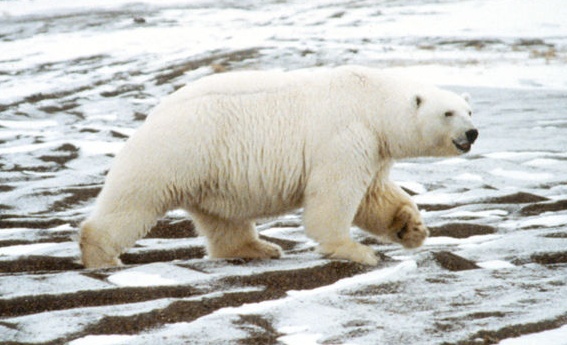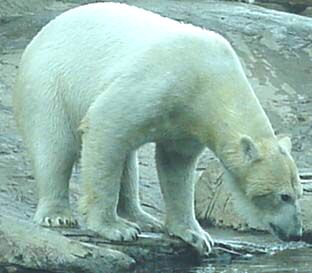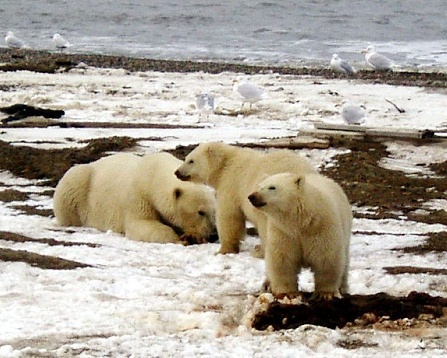POLAR BEAR

1. WHERE POLAR BEARS LIVEPolar bears live in the Arctic. They do not stay in one place. They travel across the snow and pack ice looking for food. Sometimes they swim far out to sea.2. APPEARANCEPolar bears are the largest bears in the world.Adults weigh 295 kg to 600 kg (650 to 1300 pounds). Males are larger than females. A polar bear's coat can be from white to yellowish in color.  image credit - D.Jones, pics4learning.com 3. FOODSeals are their favorite food, especially the ringed seal. Polar bears spend most of their time on the pack ice or in the water, where they can hunt for the seal. The white fur helps the bear sneak up on seals that are laying on the ice. The polar bear waits by the seal's breathing holes in the ice and quickly snatches the seal when it pokes its head out of the hole.The polar bear tries to fatten up before the sea ice melts. They are no longer able to catch seals so they move ashore. In the summer polar bears eats plants and berries. They also eat fish, lemmings, arctic foxes, birds and bird eggs. In late summer and early autumm the bears go along the coastline looking for dead whales and dead walruses. 4. ADAPTATIONSPolar bears are able to swim in the icy Arctic Ocean without freezing. They have thick oily fur coats and a layer of fat (blubber) under their skin. When bears comes out of the water they shake the water off their coats.The bear's large feet are like snowshoes. The hair on the soles of its feet help the bear walk on the slippery ice and snow. The bear walks with toes pointing inward to avoid slipping. Polar bears are good swimmers. They have large front paws with partially webbed toes. They paddle with their front legs and use their hind legs as rudders. The polar bear has a very good sense of smell and can sniff dead animals from far away and can find seals in dens beneath the snow. Their claws help them to catch seals. The polar bear's huge teeth are for tearing the prey apart. 5. PROTECTIONThe polar bear is so strong it can kill an animal with one blow to the head. image credit - Steve Amstrup, US Fish and Wildlife Service, license : public domain 6. THE YOUNGThe female ususally has two cubs. Sometimes she may have three. When the cubs are born they are very tiny. They weigh less than less than a kilogram (less than two pounds). The cubs have very fine fuzz and are blind and deaf.In November or December the cubs are born in dens in the snow. They stay in the den for about three months. The cubs are safe and protected from the cold and the wind. The mother feeds them milk but she has nothing to eat. The mother and her cubs leave the den in March or April. The cubs stay with their mother for about two years. In one year the cubs are as big as a person. A female polar bear gives birth every third year. 7. INTERESTING FACTSSometimes polar bears go into towns and villages. They can break into buildings to find food. Polar bears are found near the town of Churchill (Manitoba, Canada). They search for food at the garbage dump outside of town. Sometimes they go right into the town. Bears that raid towns are not shot, but caught and taken back to the wild.The polar bear eats the seal's skin, fat and internal organs but not the meat if there is plenty of prey. Most northern countries have laws to protect the polar bear. Hunters are still able to kill a few each year. Polar bears are born on land but spend most of their time on pack ice and are very good swimmers. Much of their food is from the sea. So polar bears are considered to be marine mammals. |
image 1 polar bear walking - Connie Barclay, USFWS, DLS Digital Library System
image 2 polar bear drinking - courtesy of D.Jones, Pics4Learning
image 3 polar bear and cubs - Steve Amstrup, USFWS, DLS Digital Library System
J.Giannetta
jgiannet@hotmail.com
(2003) updated August 2011